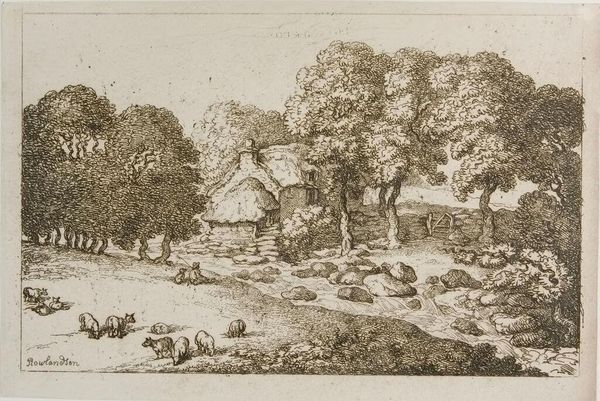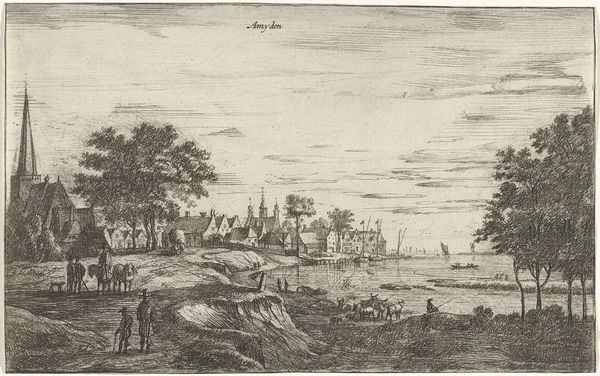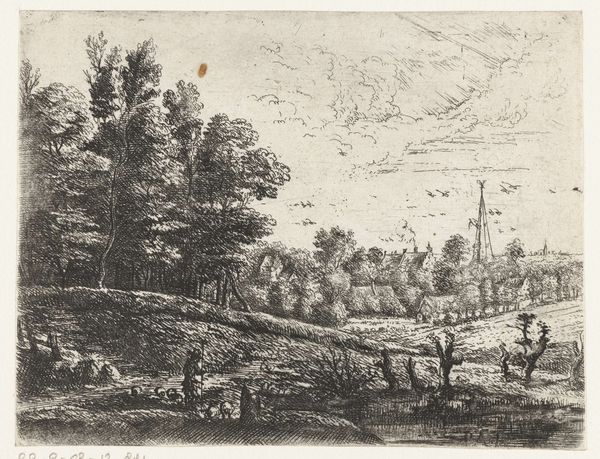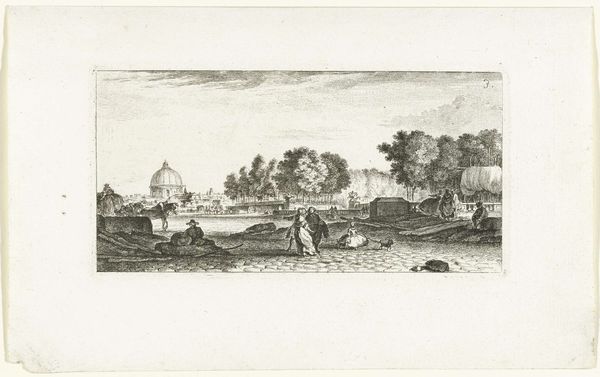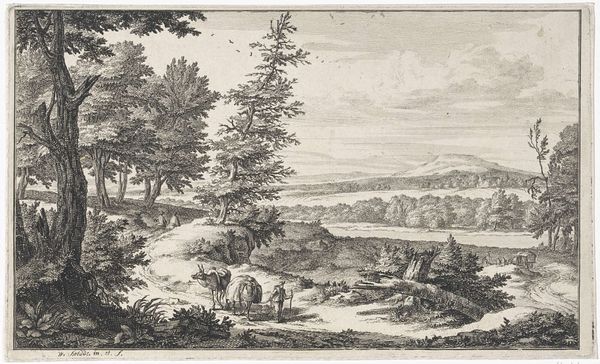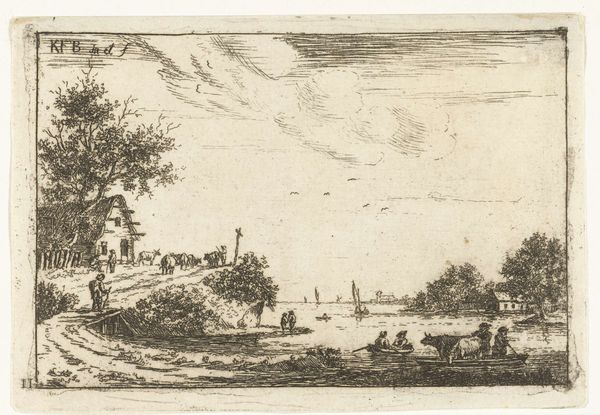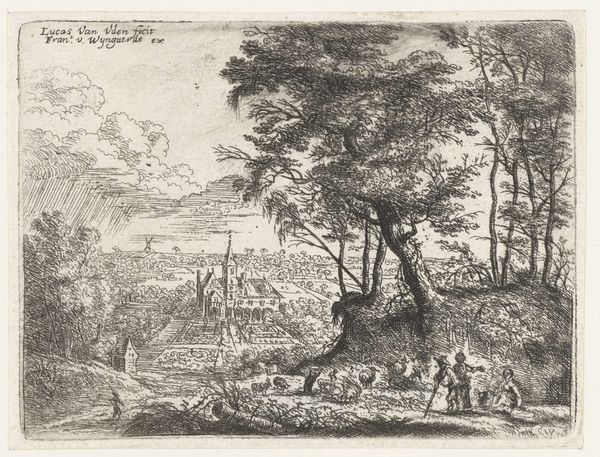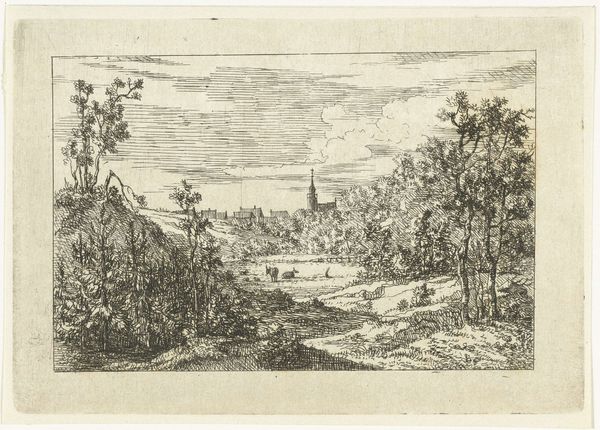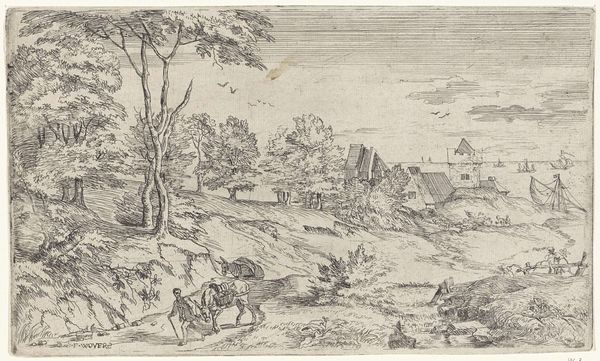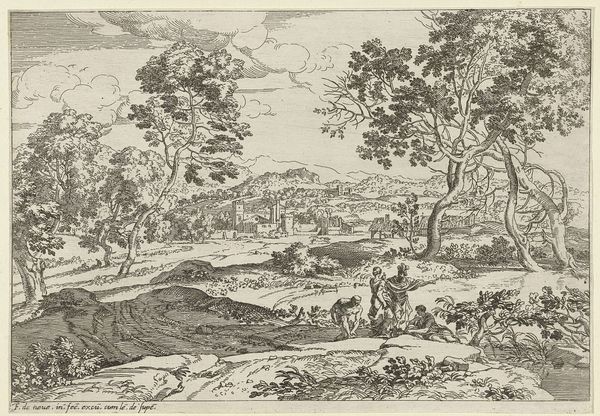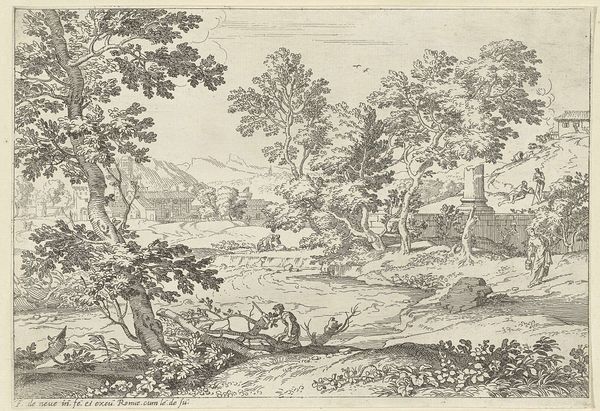
drawing, print, etching, paper, ink
#
drawing
#
baroque
#
dutch-golden-age
# print
#
etching
#
landscape
#
paper
#
ink
Dimensions: height 88 mm, width 123 mm
Copyright: Rijks Museum: Open Domain
Editor: We’re looking at "Gezicht op een dorp met een huifkar," or "View of a Village with a Covered Wagon," an etching by Lucas van Uden, made sometime between 1605 and 1673. It's small, incredibly detailed. The village feels serene, but there’s something melancholy about the rendering. What captures your eye when you look at it? Curator: It whispers to me of quietude, of lives lived close to the land. Van Uden really excels at capturing the everyday magic. Notice how he uses such delicate lines to create depth; you can almost feel the air and smell the damp earth. It's a world painted with light and shadow, isn't it? Like a dream half-remembered. Do you sense a yearning in it too? Editor: Yes, the fine lines almost dissolve into the paper. A yearning for what, though? Curator: Maybe for a simpler time, or perhaps a recognition of nature’s enduring power. I find it amazing how such humble materials – paper and ink – can evoke such profound emotions. He focuses our gaze, like stage director positioning his players. Doesn't the smallness make it all the more precious, like holding a secret? Editor: Definitely, its size invites a more intimate viewing experience. Curator: Exactly! It feels like Van Uden is sharing a deeply personal vision, a fleeting moment of beauty observed. Perhaps it's an invitation to slow down and appreciate the world around us, wagon or no wagon. What do you take away, standing here with it? Editor: I'm struck by the power of suggestion in this tiny etching; Van Uden suggests entire worlds with just a few lines. It's much more dynamic and evocative than I initially thought. Curator: Isn't it extraordinary? Sometimes, it’s the quietest voices that speak the loudest.
Comments
No comments
Be the first to comment and join the conversation on the ultimate creative platform.
